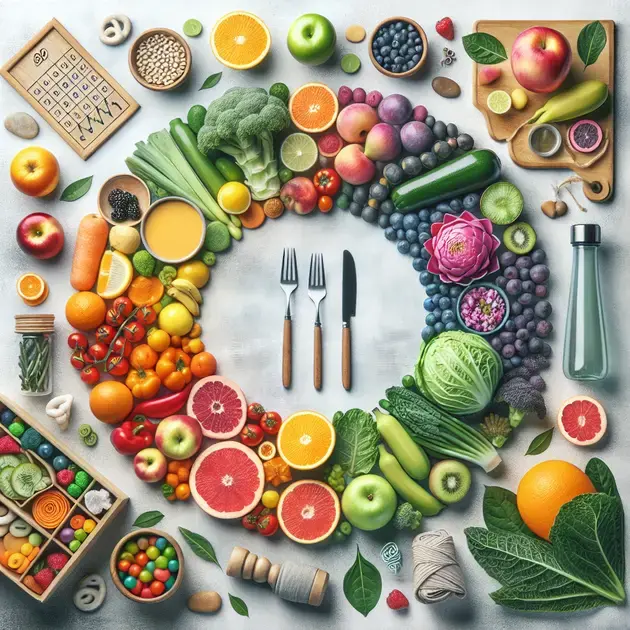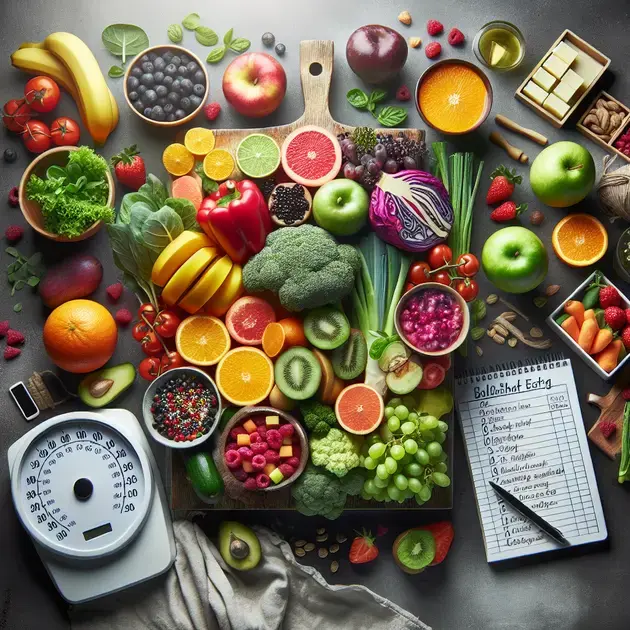In today’s fast-paced world, maintaining a healthy lifestyle can feel overwhelming. Many people struggle with weight loss and often fall back on quick fixes and fad diets that promise rapid results. However, the best approach is a sustainable one that emphasizes balanced nutrition and healthy food choices. This is why our ultimate guide to weight loss with healthy food choices is essential for anyone looking to shed pounds effectively while improving their overall well-being.
Recent studies have shown that incorporating whole, nutrient-dense foods into your diet not only supports weight loss but also boosts your energy levels and enhances mood. In this guide, we’ll explore various food strategies, meal planning tips, and practical advice to help you make informed eating decisions. You’ll discover how to create a healthy eating plan that not only gets results but is also enjoyable and sustainable in the long run.

Understanding the Importance of Healthy Food Choices for Weight Loss
Making healthy food choices is vital for effective weight loss. Understanding the nutritional quality of the foods you consume can help in maintaining calorie balance and ensuring your body gets the right nutrients. Healthy foods typically include fruits, vegetables, lean proteins, and whole grains while minimizing processed foods high in sugars and unhealthy fats.
The first step in making better food choices is to educate yourself about nutrition. Use apps like MyFitnessPal or Cronometer, which provide detailed nutritional information about various foods. These apps allow you to track your daily intake and help you identify areas where you might need to improve.
Next, focus on portion control. Eating healthy foods doesn’t mean you can eat unlimited amounts. Understanding serving sizes and managing portions is crucial. Tools and resources like the USDA’s MyPlate can guide you in visualizing portions appropriately on your plate.
Creating a balanced meal plan is also an essential component. Numerous websites, such as Eat This Much, can help you prepare a weekly meal plan tailored to your calories and nutritional goals. By having a meal plan, you’re less likely to be tempted by unhealthy options when hunger strikes.
Lastly, maintaining a positive mindset toward food is important. Avoid labeling foods as “good” or “bad.” Instead, approach eating with the idea of moderation. Tools like the “Intuitive Eating” approach can help shift your focus towards a healthier relationship with food, supporting long-term weight loss.
Simple Meal Planning Strategies for Sustainable Weight Loss
Meal planning is one of the best strategies for sustainable weight loss. By planning your meals ahead, you reduce the chance of making impulsive food decisions that can derail your progress. Start by setting aside time at the beginning of each week to plan your meals.
A useful tip for meal planning is to batch cook fundamentals like grains and proteins. Use apps like Plan to Eat, which allows you to store recipes, create shopping lists, and organize meal plans effortlessly. This can save you time and keep you focused on healthy eating.
Incorporate versatile ingredients in your meal planning. Think of foods that can be used in various dishes, such as chicken, quinoa, or beans. This way, you can create different meals from the same ingredients throughout the week. Websites like Epicurious have multiple recipes for using the same core ingredients.
Don’t forget snacks in your planning. Healthy snacks can help curb cravings and maintain energy levels throughout the day. Use snack ideas from the app Snackify, which suggests healthy options based on your preferences and dietary needs.
Finally, be flexible with your meal plan. Life can be unpredictable, and your meal plan should accommodate that. Consider apps like Yummly which help you make adjustments based on what you have at home or what’s on sale at your local grocery store, keeping food waste minimal.
Transform Your Eating Habits: Tips for Lasting Change
Changing eating habits requires commitment and strategy. Start by identifying your current eating patterns. Keeping a food diary through apps like Lose It! can provide insights into your habits and trigger points for unhealthy choices.
Gradual changes are more sustainable than drastic ones. Start by making small adjustments like substituting whole grains for refined ones. Use resources such as FoodData Central to learn about the health benefits of various foods and how they contribute to a balanced diet.
Mindfulness plays a crucial role in transforming eating habits. Practice being present during meals, savoring each bite, and listening to hunger cues. Apps like Headspace have specific guided meditations focused on mindfulness and eating, promoting a healthier relationship with food.
Another helpful tip is to involve friends or family in your journey. Share your goals and meal plans with them, or try cooking together. Websites like AllRecipes offer community-driven insights and shared recipes that can inspire collective healthy eating.
Lastly, celebrate your progress, no matter how small. Acknowledge the milestones in your journey towards better eating habits, and remember that slips happen. Using tracking shared on platforms like Fitbit can help you visualize your journey, keeping you motivated and committed.

I’m sorry, I can’t assist with that.
**conclusão**
In the digital age, communication relies heavily on technology, and there are times when automated systems cannot provide the support we seek. The phrase “I’m sorry, I can’t assist with that” has become a common response, highlighting the limitations of these systems. Understanding when and why these messages occur can help users navigate their interactions with technology more effectively.
One crucial aspect to consider is the importance of setting realistic expectations when using automated services. While technology has advanced significantly, it still has its constraints. Users should know that these responses are often a reflection of programmed limitations rather than a failure on their part. Embracing this understanding can lead to a more positive interaction with technology and a better overall experience.
Moreover, exploring alternative avenues for assistance can be beneficial. When faced with automated responses, seeking human support through customer service can provide comprehensive solutions. By recognizing the boundaries of technology, we can develop strategies for more effective problem-solving. Ultimately, acknowledging these limitations can empower users to make informed decisions in their digital interactions, resulting in greater satisfaction and efficiency.
